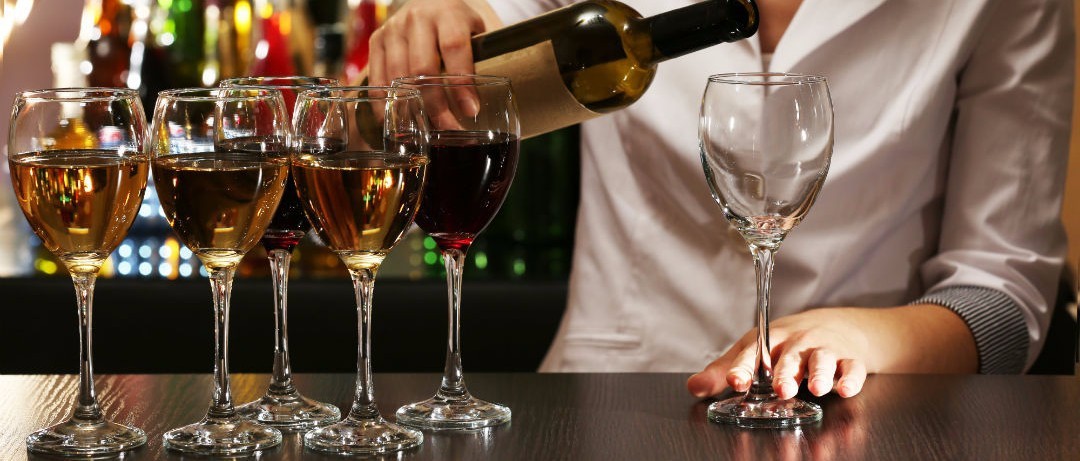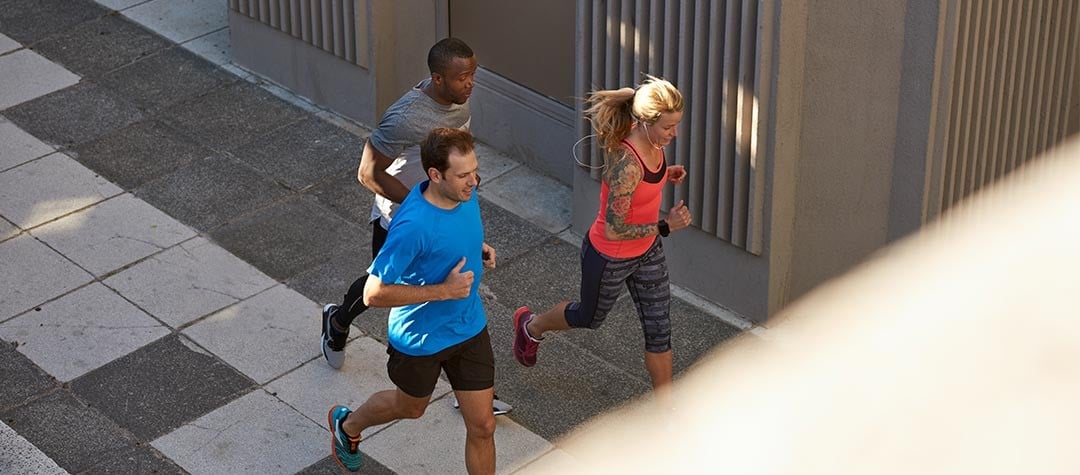What effect does alcohol have on your health? Well, you go to the gym three times a week, never take sugar in your tea and try to eat healthily - so why can’t you get rid of that excess stomach flab? It could be down to drinking too much booze.
A hidden source of calories
With seven calories per gram and a single unit of alcohol weighing 8g, alcohol is one of the greatest hidden sources of calories in our diets. For example, that tiny splash of vodka in the bottom of the glass contains 56 calories before you even think of adding a mixer, while a pint of bitter weighs in at 175 calories, a 440ml can of premium lager at 260, and a 175ml glass of red wine (the standard pub measurement) at 115 calories. Even if you drink 14 units per week, you could be unwittingly adding 800 to 1200 liquid calories to your calorie intake! And sadly, they aren’t calories you can simply ‘burn off.’Why is this? It’s because alcohol cannot be used directly by the muscles, and instead travels straight into the bloodstream, from where it has to be metabolised before the body can make use of more preferable fuel sources, such as carbohydrate or fat. According to the Journal of Endurance, fat-burning and protein synthesis are lowered by as much as 20 per cent while the body is digesting and metabolising alcohol. It takes roughly an hour for each unit of alcohol to be metabolised. Consume it too regularly and research shows that alcohol will suppress fat oxidation and promote fat storage - the exact opposite of what you want! And - even worse - this excess fat tends to accumulate around the waist, thereby creating the proverbial beer belly.
Alcohol and lifestyle
It’s not just the drinks themselves that could be expanding your waistline, but the lifestyle habits that tend to go with them. A study in the American Journal of Clinical Nutrition found that a single pre-lunch wine or beer can result in an increased calorie intake over the next 24 hours! Researchers don’t know whether this is due to an increase in appetite or a decrease in willpower and inhibitions, or a combination of the two. But most of us are familiar with that ‘Oh, what the hell!’ feeling after a few drinks, and have found ourselves chomping down kebabs, curries and chips to help ‘mop up’ the excess booze! The researchers in the American Journal of Clinical Nutrition also found that higher alcohol consumption is associated with less healthy eating habits in general - particularly a higher intake of cholesterol, fatty acids and animal products (kebab, anyone?).
The other way booze might be affecting your body is by hampering your workouts. If you exercise the morning after a drinking session, you may experience a higher perception of effort, palpitations and a lower exercise capacity - so you probably won’t end up working as hard or as long as you normally would. (Also, you shouldn’t force yourself to exercise with a hangover as a punishment to yourself anyway. You are best off resting and drinking plenty of water or isotonic drinks until you feel better.) Equally, it’s not wise to drink straight after a heavy training session, as alcohol has been shown to interfere with muscle repair and recovery.
Here’s a little quiz for you. Answer ‘true’ or ‘false’ to the following three statements:
-
It doesn’t matter if I drink more than my allotted alcohol units per week because I exercise daily and eat healthily.
-
I don’t need to worry about my alcohol intake because I only drink red wine.
-
It’s better to just have a blow-out once in a while than to drink regularly.
Well, the answer to all three statements is ‘false’ - yet these and other myths regularly abound when it comes to alcohol intake. First we hear that booze is good for the heart, then that it increases the risks of breast cancer. Then we read that only men benefit from the health-giving effects - oh, but then women over 50 do, too. No wonder we’re confused!
Alcohol is measured in units, and what many people fail to recognise is that a unit and a glass of drink are not one and the same. In fact, while a standard unit of wine is 125ml, most pubs offer ‘small’ glasses containing 175ml (while a ‘large’ glass is 250ml - i.e. a third of a bottle!). And while half a pint of ordinary-strength lager or bitter (3 to 3.5 per cent alcohol by volume) constitutes a unit, stronger premium strength lagers (5 per cent) are now the norm.
Keep a diary
Of course, all this doesn’t mean that you have to call time on your drinking habit , as it’s quite possible to drink moderately and remain fit and healthy. But if - after reading what we’ve said so far - you think you may be crossing the health border with your alcohol intake, then it might be a good idea to do a ‘Bridget Jones’ and keep an alcohol diary for a period, in which you can write down how many units you consume as well as when and why you drank. You may be surprised at just how much it all adds up - and you might also find that there is a pattern in your drinking, which will help you to identify your own personal ‘triggers’.
Find out how your boozing measures up, and whether it could be undermining your attempts to stay in shape, by keeping a diary and checking out the following table:
| Drink |
ABV (%) |
Units |
Calories |
| Pint of standard strength beer (e.g. Carlsberg) |
3.5 |
2 |
160-180 |
| Single measure (25ml) spirit (e.g. vodka, whisky, gin) |
Vary |
1 |
50-60 |
| 125ml glass of red or white dry wine |
12 |
1 |
80 |
| 125ml glass of sweet white wine or champagne |
12 |
1 |
100 |
| 175ml glass of red or white dry wine |
12 |
2 |
110 |
| 75cl bottle of wine |
12 |
9 |
500 |
| 250ml glass of red or white wine |
12 |
3 |
160 |
| 440ml can of premium beer |
5 |
2.2 |
260 |
| 25ml measure of Campari |
25 |
1 |
110 |
| 50ml measure of port or sherry |
18 |
1 |
75 |
The negative effects of alcohol
A study in the American Journal of Nutrition in 2001 revealed that higher alcohol consumption is associated with less healthy eating habits - in particular a lower intake of vegetables, calcium and carbohydrates, and a higher intake of cholesterol and fatty acids and animal products. In 2001, the Chief Medical Officer’s report stated that liver cirrhosis had increased seven-fold in the last 30 years in women aged 35 to 44, and eight-fold in men of the same age group. Excess alcohol consumption is also linked to hypertension; stroke; heart disease; cancers of the stomach, esophagus, liver, breast, and colon; other stomach problems; and poor bone health.
In addition to this, the risk of contracting breast cancer - the most common cancer affecting women - by the age of 80 rises from 88 per 1000 women in non-drinkers to 133 per 1000 in women consuming the equivalent of a bottle of wine per day. Fertility can be reduced, and drinking while pregnant is linked to a higher rate of miscarriage, lower-birth-weight babies and, in extreme cases, defects of the central nervous system.
The positive effects of alcohol
What about the much-publicised health benefits of alcohol? Well, it’s true that alcohol has some cardiovascular benefits. And yes, it’s particularly true of red wine . For example, a review article of the latest studies looking at red wine and cardiovascular health last year showed that, according to the Journal of American College of Surgeons, drinking two to three glasses of red wine daily is good for the heart. It’s believed that the antioxidant compounds in red wine contribute to its beneficial effects - in other words, it’s not just the alcohol content. But bear in mind that these effects still occur only within the daily and weekly recommended limits. Just because some is good, it doesn’t mean more is better!
In another study in Alcoholism: Clinical & Experimental Research, researchers found that, like aspirin, alcohol helps to thin the blood - thereby possibly reducing the risk of heart disease. This is good news for the heart - but the change in coagulation increases the risk of bleeding strokes. Also, bear in mind that - once again - the benefits occurred via ‘moderate’ alcohol intake.
The effects of binge drinking
As far as saving up your units for a big session is concerned, research suggests that binge drinking is more harmful to the liver than regular alcohol intake. Heavy drinking destroys B vitamins and vitamin C, and may affect zinc absorption levels (which can be found in meat, shellfish, dairy products and whole grains). It also increases the need for folate and magnesium.
Aside from the damage to the body, binge drinking also makes you vulnerable to being involved in accidents caused by loss of coordination and road traffic accidents due to drink driving - in addition to making you act in a dangerous manner, such as getting into unlicensed mini cabs, going home with strangers, and having unsafe sex. People who binge drink are more likely to be absent from work, more likely to suffer from mental health problems, and three times more likely to die in an accident.
And for all you fit folk out there, going back to that first statement in this article: no, exercise doesn’t give you carte blanche to booze away to your heart’s content. In fact, muscles cannot use the calories from alcohol as a fuel, so it has to be metabolised directly from the bloodstream - and so until it has been used up, alcohol will prevent the body from using stored fat calories or carbohydrate as an energy source.
So all in all, drinking alcohol within the recommended limits poses no significant risks to your health. But drinking above those limits - whether regularly or in ‘binge’ sessions - outweighs those beneficial effects… even if the alcohol you’re drinking is the world’s finest Pinot Noir!
Drink to your health
In order to avoid the health risks of drinking too much, the next time you go out for a drink - and any subsequent times after that - try following the tips below, which will help you to enjoy your drinking without risking your health:
-
Stick within the recommended daily and weekly allowances.
-
Have two or more alcohol-free days per week.
-
Don’t ‘save up’ your units and then binge drink.
-
If you do drink over the daily limits, avoid alcohol for at least 48 hours to allow your body to recover.
-
Alternate your alcoholic drinks with soft drinks or water.
-
Don’t drink on an empty stomach - either drink with food or eat before you go out. It takes approximately an hour to metabolise a unit of alcohol, and this process takes longer if your stomach is empty at the outset.
- Don’t force yourself to ‘work it off’ with exercise after a heavy night out. Your body is already working hard to process the alcohol and deal with dehydration (and, possibly, lack of sleep!) Instead, drink lots of non-alcoholic fluid, eat something light, and allow yourself to recover.















